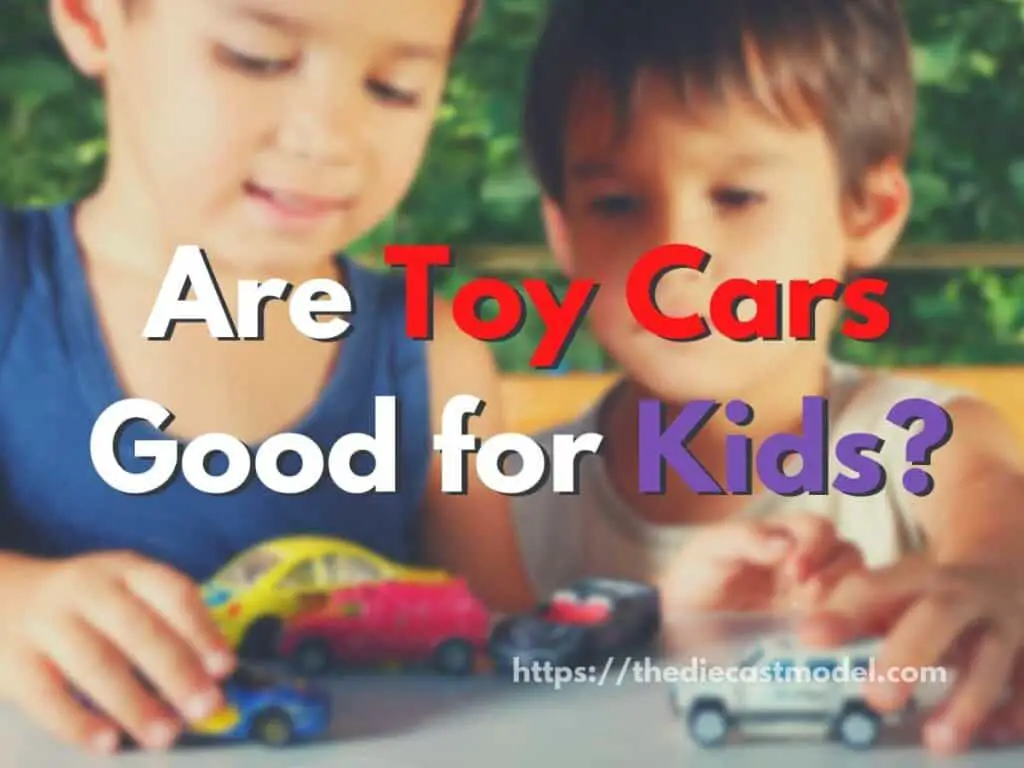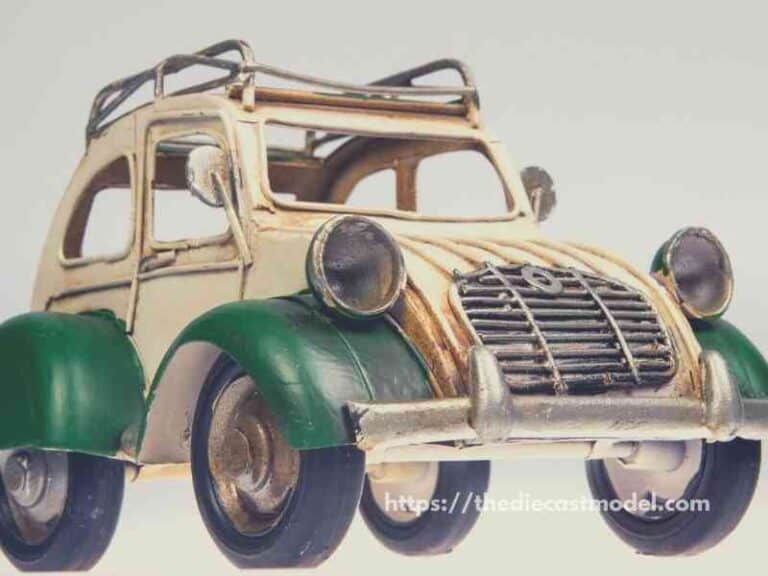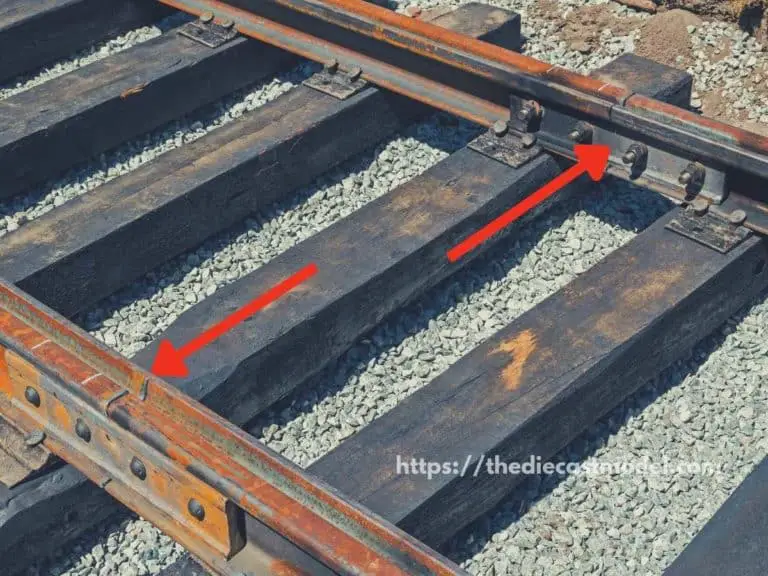Toy Cars: Are They Good For Kids? (A Parent’s Guide)
If you’re a parent, one of the common things you will be concerned about is that children have too much screen time. While the effect of screen time on children is not yet apparent, many people are trying their best to opt their children out of devices. However, it’s hard for parents to get their children to reduce screen time when they don’t have anything else to do. One way to minimize this screen time is to give them other toys such as toy cars. So the question is, are toy cars good for kids?
Toy cars are good for kids because they positively affect developing a child’s language, spatial awareness, social, and communication skills. In addition, it improves their creativity and intellectual development by helping them imagine situations while playing. This is also true for other toys such as toy buses, trains, and planes.
In this blog post, we are going to talk about the benefits of toy cars to children. Furthermore, we are going to look at their effect on child development.

Are Toy Cars Good for Kids?
Toy cars, taxis, buses, trains, fire engines, police vans, diggers, and similar toys are popular choices for millions of children worldwide.
In fact, objects with wheels that serve a practical purpose have proven to be popular play items throughout history, and for a good reason.
Toy cars can benefit children apart from providing entertainment and hours of enjoyment.
Professor Jeffrey Goldstein, a prominent child psychologist at the University of Utrecht and co-editor of Toys and Communication (2017), believes that something crucial occurs when a child plays with toy cars.
He has said that playing with toy cars positively develops a child’s language, spatial awareness, social and communication skills.
“There is no other activity that develops their language, spatial awareness, social and communication skills, and physical abilities in such a prolonged way.”
Jeffrey H. Goldstein, Ph.D. in Psychology from Ohio State University
And then, Doctor Goldstein also added that children benefit from playing with toy cars by improving their creativity and intellectual development.
“This is thanks to all sorts of factors, such as the interaction that takes place when children play together, the creativity of make-believe, and the intellectual development that comes from learning the names of objects, and then imagining them to be something completely different.”
Jeffrey H. Goldstein, Ph.D. in Psychology from Ohio State University
Another important aspect of playing in the development of motor skills. Prof Goldstein believes that moving toys are especially beneficial in this regard—“Pushing a toy car around is a good example of developing physical skills through play.”
Children usually enjoy variety in their play, and car-related toys provide plenty of it, with the opportunity to experiment and with different models or imagine different scenes.
This variety of imaginations inside the child’s head sustains children’s interest and helps them develop a broader range of skills.
How Do Car Toys Help Child Development?
Toy cars help children develop fine motor skills, which are physical movements such as reaching, bending, balance, pushing, pulling, and coordination. This is because playing with car toys provide children with opportunities to practice their gross and fine motor skills while playing.
Children learn by moving things.
They observe how slowly or quickly toys move and learn how to apply certain pressure to change the direction or speed of the toy car.
This early lesson instills in the child a sense of self-sufficiency.
Playing with toy and ride-on cars can help your child’s physical, social, and emotional development.
Here’s how toy cars help in child development.
1. Toy Cars Helps in Developing Fine Motor Skills
Playing with a small toy car aids in the development of children’s fine motor skills.
They learn by carrying, picking up, throwing, pushing, and pulling small toy cars around and developing hand-eye coordination and dexterity with both hands.
A toy ride-on works best when learning through adventure because children are fully involved and become more aware of their surroundings.
Fine motor skills are required when playing with toy cars.
Because these abilities are interdependent, children must learn through experience and experimentation.
It will be a fun experience to discover their abilities while preparing themselves for real life.
Holding and moving toy cars let them hold a pencil, use scissors, and even knit a cloth when they are ready for doing these jobs.
2. Playing with Toys Gives Exposure to STEM learning
STEM(science, technology, engineering, and mathematics) learning is essential for children’s development for a very important reason.
Children learn a lot about physics and science by playing with STEM-based toys such as toy cars.
STEM is an acronym, which stands for science, technology, engineering, and mathematics.
Toy cars feed these STEM learning experiences with real-world elements such as the vehicle’s speed and the pressure applied to make it go faster, rather than imposing them as disciplines.
Children learn about velocity, gravity, distance, weight, and various other topics in a fun way.
Children learn more by doing these jobs rather than by watching.
Toy cars, trucks, and ride-on provide children with an excellent opportunity to experiment with their learning.
3. Toy Cars Help in Cognitive development
Children learn through play.
Play-based learning helps children develop their understanding of the world as well as their cognitive abilities.
They discover the world and their important roles in it.
Children learn how to get in and out of their ride-on car, eventually the actual car.
They discover that a toy car has four wheels, which makes it stable.
They are aware that the road has its own set of rules.
Playing with toy cars and trucks or a ride-on can put the child in charge for a short time.
Kids enjoy being in charge, and they learn more about their surroundings due to these experiences.
While they are still years away from driving a real car, they can exercise their free will and understand how the world works.
What Do Toy Cars Teach?
Toy cars teach and provide children early language skills related to cars such as wheels, seat belts, engines, and many more. Furthermore, it gives a new way to learn symbolic sounds, such as knowing what beeping means. Lastly, it teaches social skills such as turn-taking, waiting, and sharing.
Toy cars are ideal for supporting early language skills in late talkers or preschoolers suffering from language delays.
During the therapy sessions and play-based therapy activities, you can set various goals and use multiple language strategies with them.
Specialists can use cars to persuade children who have difficulty learning new words or speaking aloud to say new ones.
Because cars are a common type of vehicle, learning the parts of a car is a practical task they can practice frequently and confidently, just as they did with their toy.
There is a lot of vocabulary development when discussing a vehicle, such as wheels, seat belts, engines, windshields, and window wipers.
Imitation is a crucial pre-linguistic skill, and playing with toy cars is a fun way to practice it.
For example, you can simulate actions like pushing the car and then stopping, pushing with one finger, or banging the car on the floor or with a wall.
Children can also use toy cars to practice symbolic sounds and exclamatory words, which is beneficial for developing early language skills.
When playing with toy cars, it’s fun to practice words and sounds like ‘vroom,’ ‘zoom,’ ‘beep beep,’ ‘honk,’ ‘wow,’ ‘yay,’ and so on.
Use toy cars to practice core words like “go,” “stop,” “again,” and “more.” You can also practice taking turns, requesting, and making decisions.
A “What’s in the bag?” activity is another excellent way to use toy cars to aid early language skills.
You put a variety of vehicles inside a bag for this.
Take turns pulling out a vehicle, naming it (or making the sound), playing with it, and matching it to the picture.
This activity supports early skills such as turn-taking, waiting, sharing, requesting, and more, in addition to vehicle names and sounds.

“Only the things I love”
thediecastmodel.com is reader-supported. When you buy through links on the site, I earn an affiliate commission.
So, here are the things I love when taking care of my Diecast Models.
Cleaning the Models
The first we are going to talk about is cleaning the models.
Removing Dust
- Air Brush – For me, this is the best since it not just removes dust but you can use it in painting/clear coating.
- Air Duster – This is a good alternative to Airbrush
- Normal Brush – If you are short on budget, you can use a normal brush. However, make sure that the brush has soft bristles because there are some hard brushes than can cause scratches. That’s why I recommended a good brush that can do the job properly.
Cleaning and Shining Hacks
Well, here are some of my cleaning hacks for removing scratches, oxidation, and so much more.
- Removing Decal Adhesive – Use Goo Gone on those hard-to-remove decal adhesives. It works fast and works like charm!
- Waxing and Polishing – Here is something a lot of people don’t know. Waxing protects the clear coat and paint while polishing shines the model. Instead of buying it separately, use a 2 in 1 to save money. Get this instead.
- Beginner Wax – The wax I recommended earlier is good and provides the best results based on my experience. But a beginner might have a problem especially if they’re not good at applying wax. Solid wax reaching hard to reach surface can be hard to remove. You have two choices here. One is to use a qtips to reach those surfaces, another is to use a liquid wax I recommended.
- Cleaning Wheels, Rubber, Plastic – Do not forget that rubber and plastic surface are quite different, especially in the cleaning process. Just wiping it down won’t do the job. That’s why I use Meguiar’s Vinyl and Rubber Cleaner and Conditioner. Works like charm!
- Make the Wheels Shine! – Making our models look good won’t be complete without tiny details such as shiny wheels! Do not forget this because however small this is, the difference can be as big as night and day.
- Remove Scratches Easily – Tiny scratches are not the end for your model. Here is a simple trick I’ve been using to make my models look scratch-free even without repainting. Use T-Cut.
Painting the Models
Painting Tools
Make sure when you paint models, have these ready.
- Tape – A tape is important if you are painting a straight line. Furthermore, it will prevent your paint to scatter on other parts. I recommend Tamiya Tape since it is really made for models. Furthermore, they stick really well preventing paint splatters.
- Brush (Beginner) – Find a good set of brushes to paint your models. Of course, you can opt for an airbrush but it’s quite expensive.
- Airbrush (Intermediate/Expert) – This will yield a significantly better result than an ordinary brush because you can easily spray the paint evenly. I recommend this if you know what you’re doing.
- Stand(Optional) – Stands are good because it can be hard to manually hold the models while painting. It is optional but in my opinion, the price is well worth it for the comfort it gives.
- Drop Cloths – Drop Cloths will protect your surroundings from the paint.
- Primer – The most common beginner mistake I see is painting models without any Primer. A primer will prevent imperfections such as bubbles or paint not sticking to your models. It is a small price to pay for quality results.
- Clear Coat – A clear coat will protect the paint of your models. This will make the paint last longer. Also, it is the one responsible for making your models shine.
Paints
Of course, you can’t do painting properly without paint. So here are the ones I recommend.
- Acrylic Paint – Good for beginners because it dries quickly. However, it doesn’t produce results as good as enamel paint.
- Enamel Paint – Provides a good quality finish and longer-lasting paint. However, it takes longer to dry and requires expertise to use.
Model Maintenance
Model Storage
- Simple Wood Cabinet – While it doesn’t let you display your models, wooden cabinets are good storage for these models. For one, they are not heat conductors which means that the temperature inside will remain constant and remain cool. Furthermore, they prevent light from reaching the models which can cause oxidation.
- Clear Cabinet with Lock – If you want to display your models, then I recommend this. It closes so dust won’t easily get to your models. I also recommend you don’t put more than 1 model in each compartment since metals are good conductors of heat.
Model Photography
So you want to show off your models to others? Well, I got you covered.
Here is my beginner-friendly model photography tutorial that teaches everything from taking pictures to the editing process.
You will also see me doing hands-on photography in that tutorial.
Here is the link: How to Take Pictures of a Diecast Model or Model Kit | Helpful Illustrated and Video Guide
Source
Telegraph | How playing with toy cars can fuel your child’s development and imagination







